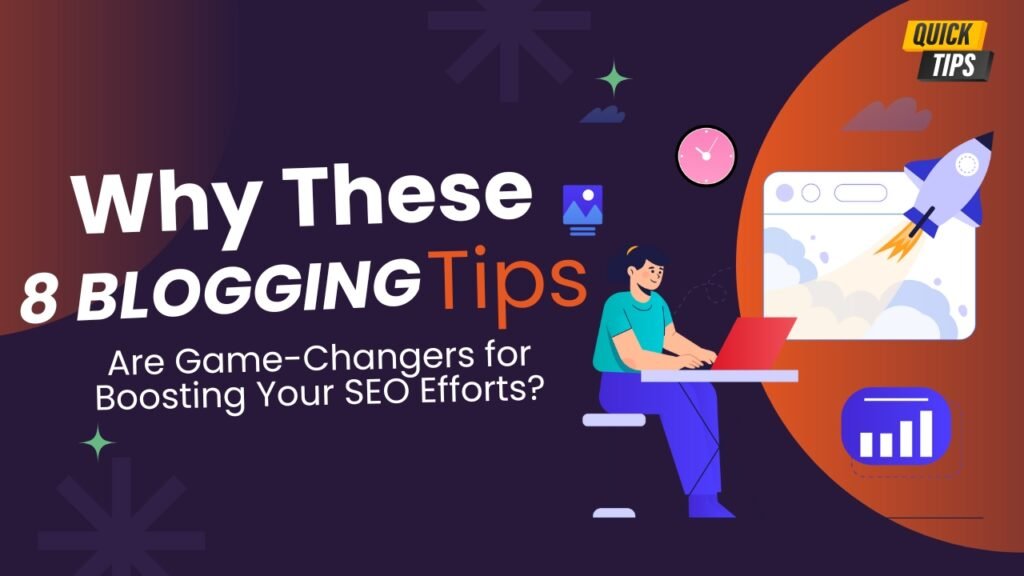Creating a blog that ranks highly on search engines and attracts organic traffic requires more than just good writing. It’s about using proven strategies that optimize your content for search engines while keeping readers engaged. In this article, we delve into eight transformative blogging tips that will significantly enhance your SEO efforts. Get ready to uncover the secrets to boosting your blog’s visibility and driving more traffic to your site.
1. Utilize Long-Tail Keywords
When it comes to SEO, not all keywords are created equal. Long-tail keywords, which are more specific phrases that users are likely to type into search engines, can be a game-changer for your blog. These keywords are less competitive than broad keywords and can attract highly targeted traffic. For instance, instead of targeting “blogging,” you might use “best blogging tips for beginners.”
Long-tail keywords help you rank for niche topics and draw in readers who are looking for exactly what you offer. They cater to search intent, meaning users are closer to making a decision or purchase. To identify long-tail keywords, tools like Google Keyword Planner, SEMrush, and Ahrefs can be invaluable. They provide insights into search volume, competition, and keyword variations that you might not have considered.
Incorporate these keywords naturally into your content. Avoid keyword stuffing, as this can harm your SEO. Instead, focus on placing them in strategic locations such as titles, subheadings, meta descriptions, and throughout the body of your article. For example, if your long-tail keyword is “best blogging tips for beginners,” you could use it in a subheading like “Why These 8 Blogging Tips Are the Best for Beginners.”
2. Create Comprehensive and In-Depth Content
In today’s digital landscape, content is king, but not just any content. Search engines favor comprehensive, in-depth articles that provide substantial value to readers. Aim to cover your topic from every possible angle, answering questions and providing solutions that your audience might be searching for.
Long-form content tends to perform better in search rankings. Articles that exceed 2,000 words typically receive more shares and backlinks, both of which are critical for SEO. Such content keeps readers on your page longer, reducing bounce rates and increasing the likelihood of conversions.
To create in-depth content, start with thorough research. Use reliable sources and include data, statistics, and case studies to back up your points. Structure your article with clear headings and subheadings, making it easy to navigate. Lists and tables can also break up text and make complex information more digestible.
For instance, if you’re writing about blogging tips, you could include a table comparing different blogging platforms or a list of tools that can help streamline the blogging process. This not only enhances the user experience but also signals to search engines that your content is valuable and comprehensive.
3. Optimize Your Images
Images are an essential part of any blog post, enhancing visual appeal and breaking up text to improve readability. However, they also play a significant role in SEO. Properly optimized images can drive traffic to your blog through image search results and improve page load times, which is a ranking factor.
Start by choosing high-quality, relevant images that complement your content. Use descriptive file names that include keywords instead of generic names like “image1.jpg.” Compress your images to reduce file size without sacrificing quality, as large images can slow down your site. Tools like TinyPNG and ImageOptim can help with this.
Add alt text to every image. Alt text is a brief description that helps search engines understand the content of the image. It should be concise and include your target keywords where appropriate. For example, an alt text for an image in a blog about blogging tips could be “A chart showing the top blogging tips for SEO.”
Also Read: SEO Tips for Local Businesses to Attract More Customers in 2024
4. Enhance Readability and User Experience
User experience (UX) is a critical factor in SEO. Search engines prioritize sites that offer a seamless, enjoyable experience for visitors. This includes everything from site speed and mobile-friendliness to the layout and readability of your content.
Readability is crucial. Use short paragraphs, bullet points, and subheadings to make your content easy to scan. Avoid jargon and complex sentences that can confuse readers. Tools like Hemingway Editor can help you simplify your writing and improve readability scores.
Mobile optimization is another key aspect. With more people accessing the internet via mobile devices, having a mobile-friendly site is essential. Ensure that your blog is responsive, meaning it adjusts to fit any screen size. Google’s Mobile-Friendly Test can help you determine if your site meets these criteria.
5. Leverage Internal Linking
Internal linking is a powerful yet often overlooked SEO strategy. By linking to other relevant pages on your site, you help search engines understand the structure and hierarchy of your content. This can improve your site’s crawlability and indexation.
Internal links also keep readers on your site longer by directing them to additional content that might interest them. For example, if you mention SEO tools in your blog about blogging tips, you could link to another post where you review different SEO tools.
When creating internal links, use descriptive anchor text that tells readers what to expect when they click. Avoid using generic phrases like “click here.” Instead, opt for specific keywords related to the linked content. For instance, “learn more about SEO strategies” is more informative than “read more.”
7. Harness the Power of Social Media
Social media is not just for sharing personal updates; it’s a powerful tool for promoting your blog and improving SEO. While social signals (likes, shares, comments) are not direct ranking factors, they can amplify your content’s reach and drive traffic to your site.
Share your blog posts on multiple social platforms, including Facebook, Twitter, LinkedIn, and Pinterest. Each platform has its own strengths, so tailor your approach accordingly. For example, Pinterest is great for visual content, while LinkedIn is ideal for professional, in-depth articles.
Engage with your audience on social media by responding to comments and joining relevant groups and discussions. This not only increases your visibility but also builds relationships with potential readers and influencers in your niche.
Must Read: How to Use SEO to Grow Your WordPress Blog Audience in 2024?
8. Use Analytics to Drive Content Strategy
Data-driven decisions are the cornerstone of effective SEO. By analyzing your blog’s performance, you can identify what’s working and what needs improvement. Tools like Google Analytics and Google Search Console provide valuable insights into your site’s traffic, user behavior, and search performance.
Look at metrics such as page views, bounce rate, average session duration, and conversion rates. These can help you understand which topics resonate with your audience and which ones don’t. For example, if a blog post about SEO tools receives a lot of traffic and engagement, you might consider creating more content on similar topics.
Use search analytics to identify keywords that are driving traffic to your site. If you notice that certain keywords are performing well, incorporate them into your content strategy. Additionally, track your backlinks and strive to acquire high-quality links from reputable sites, as these can boost your SEO.
9. Stay Updated with SEO Trends
SEO is a constantly evolving field. What worked a year ago might not be effective today. Staying updated with the latest trends and algorithm changes is crucial for maintaining and improving your blog’s search rankings.
Follow reputable SEO blogs and forums, such as Moz, Search Engine Land, and the Google Webmaster Central Blog. These sources provide timely updates on changes in the SEO landscape and offer tips and best practices.
Participate in SEO webinars and conferences to learn from industry experts and network with other professionals. Continuous learning will help you stay ahead of the curve and adapt your strategies to meet new challenges and opportunities.
By implementing these eight blogging tips, you can significantly enhance your SEO efforts and drive more traffic to your blog. Remember, SEO is a long-term game, and consistency is key. Keep optimizing your content, stay informed about industry trends, and engage with your audience to build a successful blog that ranks highly in search results.
Also Read: Why Website Security Should Be Your Top Priority in 2024!
FAQs
How do long-tail keywords benefit my blog’s SEO?
Long-tail keywords are less competitive and cater to specific search intents, helping you rank for niche topics and attract highly targeted traffic.
Why is long-form content better for SEO?
Long-form content tends to perform better in search rankings, receive more shares and backlinks, and keeps readers on your page longer, reducing bounce rates.
How can I optimize images for SEO?
Use descriptive file names, compress images to reduce file size, and add alt text that includes relevant keywords.
What is the importance of internal linking?
Internal linking helps search engines understand your site’s structure, improves crawlability, and keeps readers on your site longer by directing them to additional content.
How does social media impact SEO?
Social media can amplify your content’s reach, drive traffic to your site, and build relationships with readers and influencers, although social signals are not direct ranking factors.
What metrics should I track to improve my blog’s performance?
Track page views, bounce rate, average session duration, conversion rates, keyword performance, and backlinks to make data-driven decisions and optimize your content strategy.
How can I stay updated with SEO trends?
Follow reputable SEO blogs and forums, participate in SEO webinars and conferences, and continuously learn from industry experts to stay ahead of the curve.



